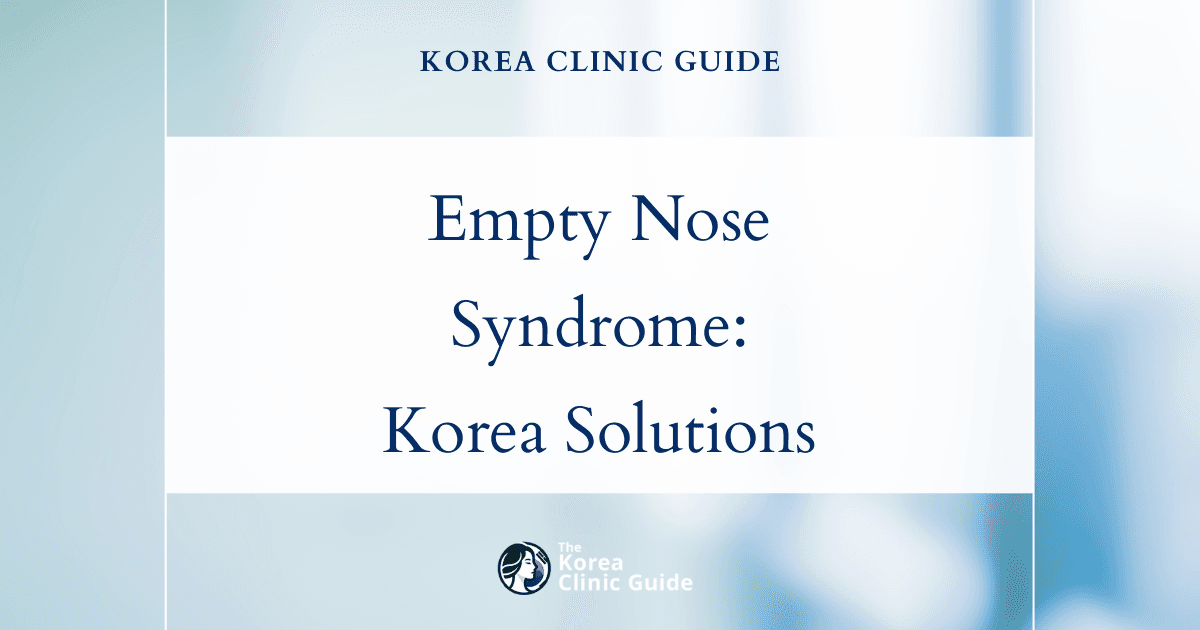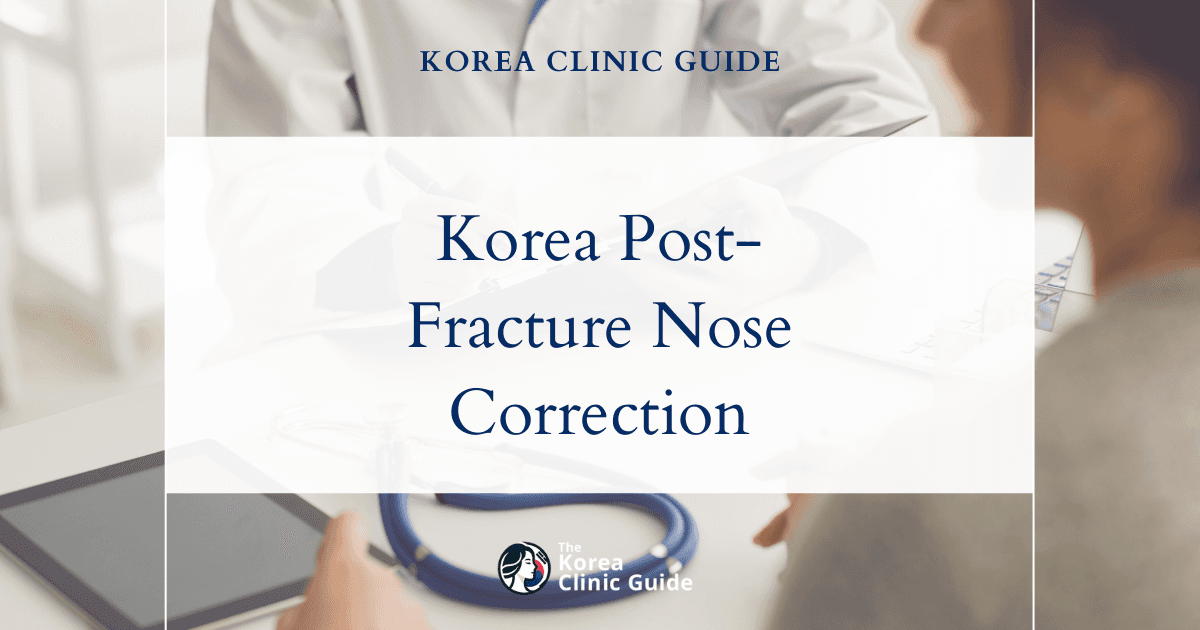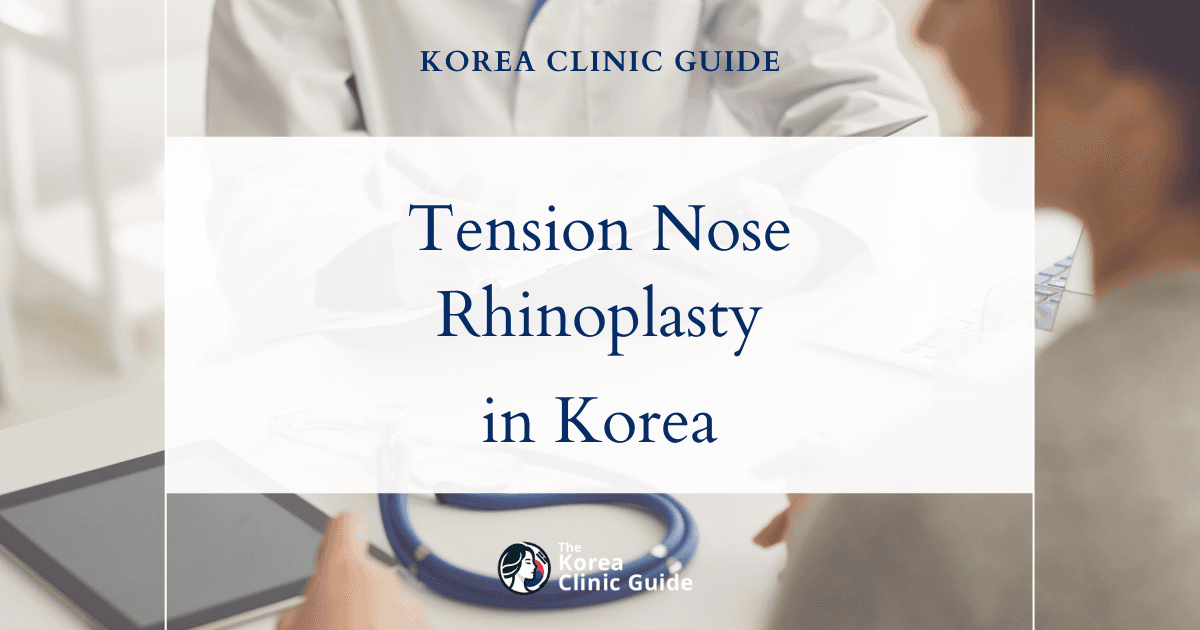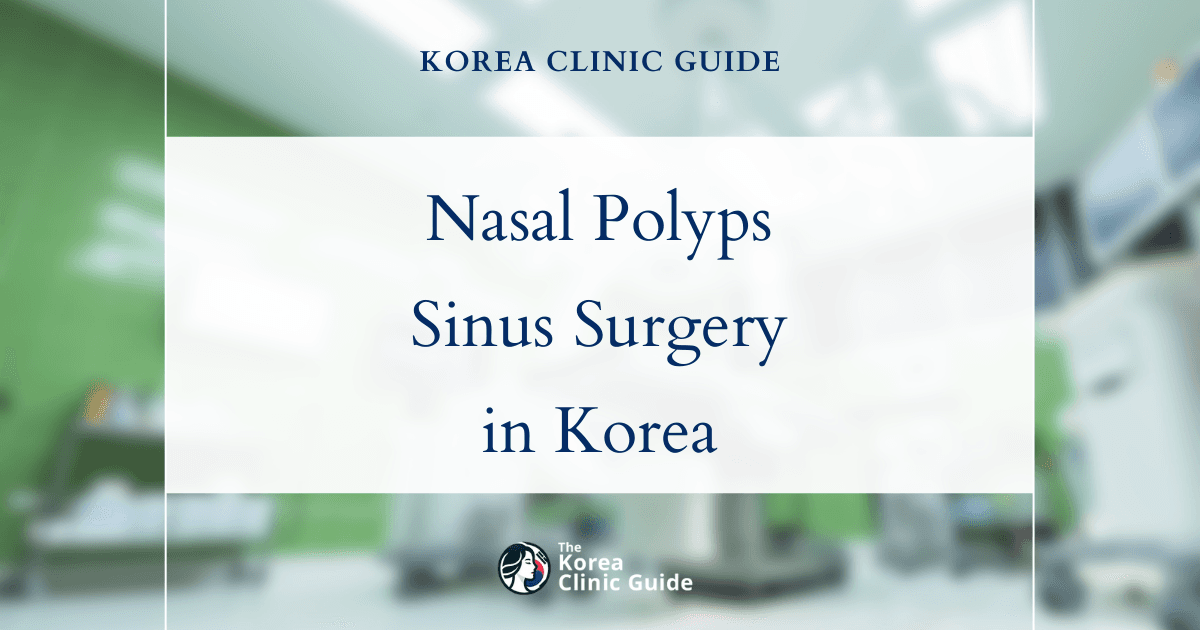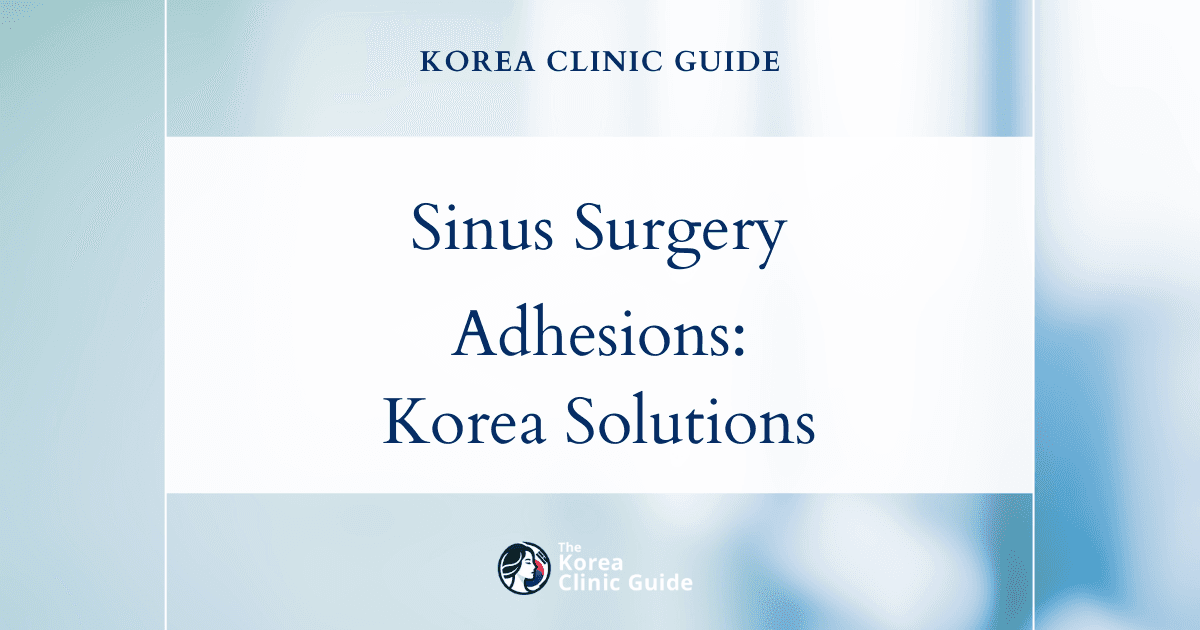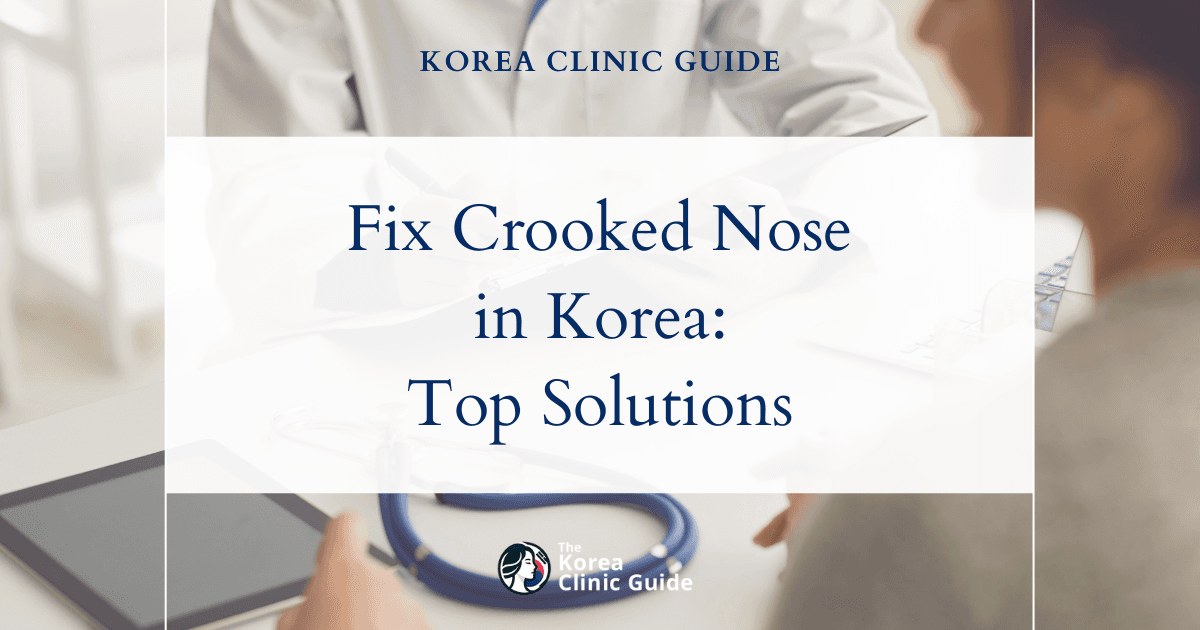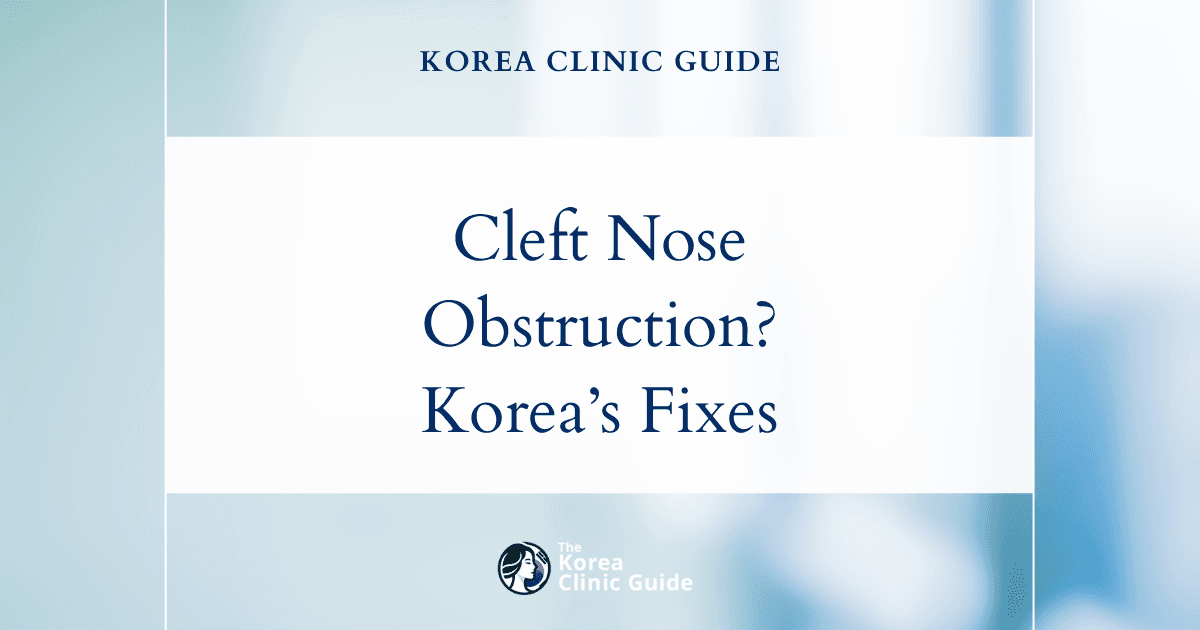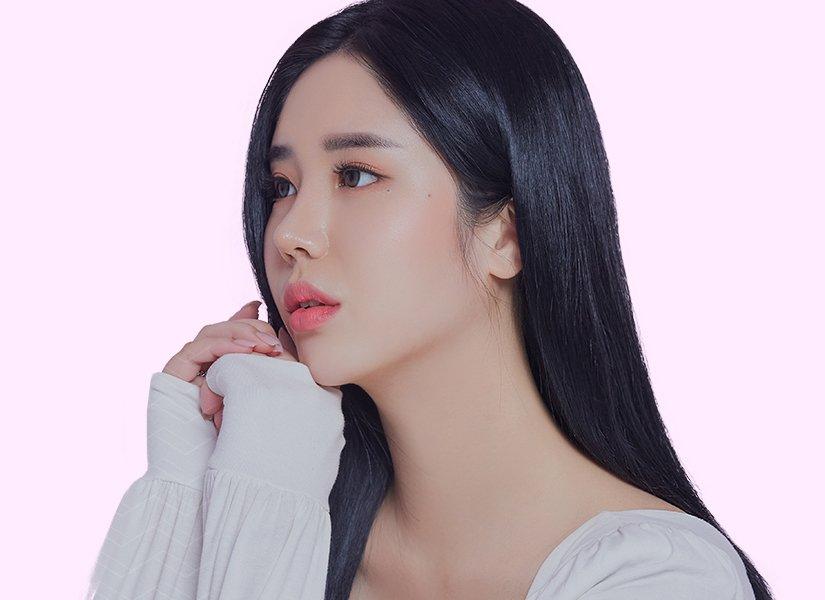Medical Tourism Blog
Rhinoplasty in Korea | Best Clinics, Costs, Procedure Types & More
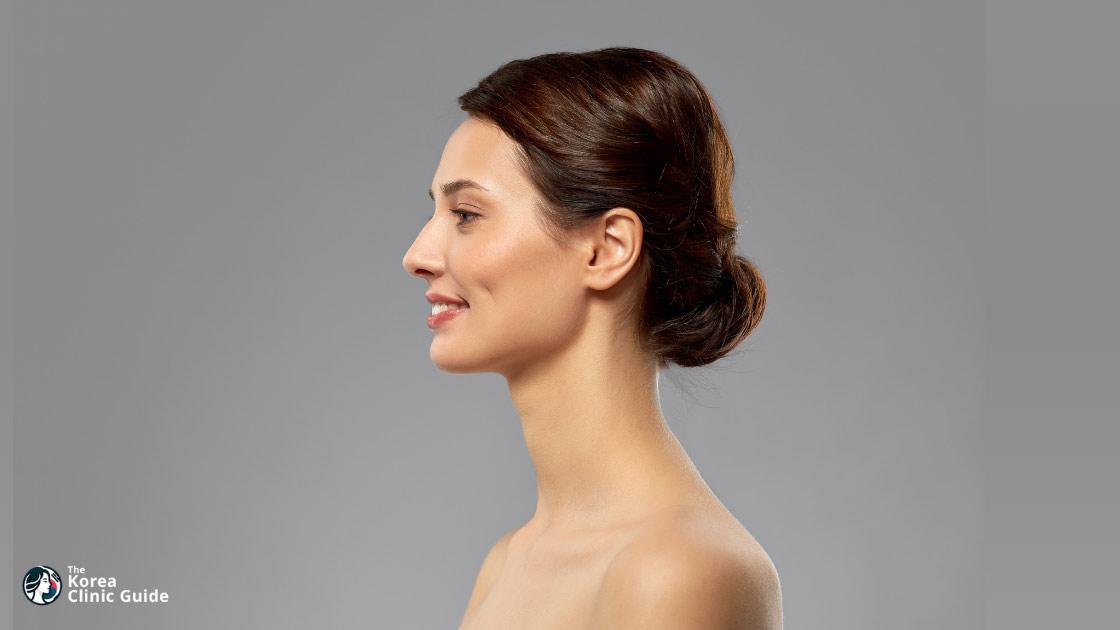
Table of contents
- Rhinoplasty Overview
- Best Clinics in Korea for Rhinoplasty
- Benefits of Rhinoplasty in Korea
- Cost of Rhinoplasty in Korea
- Rhinoplasty Aftercare and Recovery
- Alternatives to Rhinoplasty
- Conclusion
Considering treatment in Korea? Everything you need to know e.g. — how to avoid scams, visas, interpreters, recovery tips — in our Medical Tourism Master Guide. Plan with confidence in minutes, not weeks!
Are you considering refining your profile with one of the most sought-after cosmetic surgeries globally? Look no further than South Korea, the premier destination for rhinoplasty, where advanced technology, skilled surgeons, and competitive pricing meet to create stunning transformations.
Rhinoplasty Overview
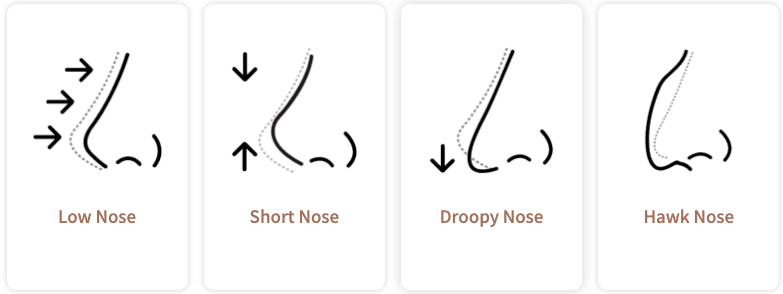
Rhinoplasty, commonly referred to as a "nose job," is a surgical procedure designed to alter the shape, size, and overall appearance of the nose. Its objectives can be both aesthetic and functional, aiming to enhance facial harmony while also improving breathing issues associated with structural abnormalities.
Surgical Objectives
-
Cosmetic Changes: Rhinoplasty can address issues such as:
- Dorsal Humps: Removing or reshaping bumps on the bridge.
- Nasal Tip: Refining a bulbous, drooping, or overly upturned tip.
- Nasal Width: Adjusting the width of the nasal bridge or nostrils.
- Asymmetry: Correcting deviations or irregular shapes that cause facial asymmetry.
-
Functional Enhancement: The procedure can also rectify problems like:
- Deviated Septum: Aligning the septum to improve airflow.
- Nasal Valve Collapse: Reinforcing weak or collapsed areas.
- Chronic Congestion: Addressing underlying structural causes of persistent nasal congestion.
Techniques
Rhinoplasty can be performed using various techniques, including:
- Open Rhinoplasty: Involves making a small incision on the columella (the tissue between the nostrils) to lift the skin off the nasal framework. This approach provides better visibility and access for more complex reshaping.
- Closed Rhinoplasty: All incisions are made inside the nostrils. While it offers a quicker recovery and no visible scars, it is more suited for less extensive modifications.
Procedure Steps
- Anesthesia: Either general anesthesia or local anesthesia with sedation is administered based on the complexity of the surgery and the patient's preferences.
- Incision: Depending on the chosen technique (open or closed), the surgeon makes precise incisions.
- Reshaping the Nose Structure: Bone and cartilage are sculpted or removed to achieve the desired shape. Additional cartilage grafts may be used, often harvested from the septum, ear, or ribs.
- Correcting a Deviated Septum: If present, the septum is straightened, and any projections obstructing breathing are reduced.
- Closing the Incisions: Incisions are meticulously closed, and the skin is re-draped over the new nasal contour.
Recovery
Post-operative care is crucial for successful healing:
- Splint and Bandaging: A nasal splint and possibly bandages are typically applied to support the new shape during initial healing.
- Swelling and Bruising: These are common and may last several weeks, with the nose continuing to settle into its final shape over the ensuing months.
- Follow-Up: Regular check-ups facilitate monitoring of the healing process and early identification of any complications.
Considerations
Rhinoplasty requires a detailed pre-operative consultation to align patient expectations with achievable outcomes. Factors such as skin type, ethnic background, and overall facial anatomy play significant roles in determining the surgical approach and anticipated results.
Rhinoplasty Procedure
Rhinoplasty (RIE-no-plas-tee) is a surgical procedure designed to change the shape of the nose. The reason for undergoing rhinoplasty usually includes changing the appearance of the nose, improving breathing, or both.
Initial Consultation
Before scheduling the procedure, you will have a meeting with a surgeon which includes:
- Medical History Review: Discuss why you want the surgery, your goals, any medical history, nasal blockages, past surgeries, and medications.
- Physical Exam: An examination of your facial features and the inside and outside of your nose helps determine the specific changes needed and how rhinoplasty might affect your breathing.
- Photographs: Photos of your nose from different angles to help the surgeon discuss possible outcomes and for use during surgery.
- Expectations Discussion: Discuss your surgical goals and what you expect from the procedure, including potential results and limitations.
Your surgeon may also discuss other facial features impacting the appearance of your nose. For example, a small chin might create the illusion of a larger nose, so chin augmentation could be considered.
Pre-Surgical Preparation
- Medications and Supplements: Avoid medicines containing aspirin or ibuprofen two weeks before and after the surgery to reduce bleeding risks. Only take medications approved or prescribed by your surgeon.
- Smoking and Vaping: Quit smoking or vaping to ensure proper healing and lower infection risks.
- Logistics: Arrange for someone to drive you home after the procedure and to stay with you for a night or two.
During the Procedure
The kind of anesthesia you receive (local with sedation or general) depends on the complexity of the surgery and surgeon preference. Rhinoplasty can be performed inside the nose or through a small incision at the base of the nose. The procedure may involve:
- Bone and Cartilage Adjustments: Bone, cartilage, skin, or all three may be altered, with reshaping done according to how much needs reshaping, while using cartilage from deeper inside the nose, ear, or even a rib, if necessary.
- Septum Correction: The septum can be straightened during surgery if it is deviated, to improve breathing.
- Completion: After adjustments, the skin and tissue are redraped over the nasal structure, incisions are closed, and sometimes splints or internal tubes are placed for support.
Recovery
- Post-Surgical Rest: Rest in bed with your head elevated higher than your chest to reduce swelling and bleeding.
- Nasal Packing and Support: Internal bandages typically remain for 1-7 days, and a splint may be applied to the nose for approximately one week.
- Bleeding and Drainage: Mild bleeding and drainage are common. A drip pad may be used to absorb drainage.
- Activity Restrictions: Avoid vigorous activities, blowing your nose, and facial expressions that might exert pressure on your nose.
- Facial Care: Brush teeth gently, wear front-fastening clothes, and avoid resting glasses on your nose for at least four weeks.
- Sun Protection: Use SPF 30 sunscreen when outside to prevent discoloration.
Swelling, bruising around the eyes, and changes in nose shape can last several months to a year as the nose heals gradually.
Results
Most swelling subsides within a year. Even minor changes in nasal structure can lead to significant differences in appearance. While experienced surgeons usually deliver satisfactory results, some cases might require a second surgery after at least one year if further adjustments are needed.
This summary of the rhinoplasty process provides a comprehensive understanding of what to expect before, during, and after the surgery.
Who is Rhinoplasty for?
-
Individuals Unsatisfied with Nasal Appearance: Those looking to change the size, shape, or proportions of their nose.
-
Patients with Breathing Problems: Individuals experiencing difficulty breathing due to nasal obstructions such as a deviated septum.
-
People with Nasal Deformities:
- Injury-related: Those needing correction of issues stemming from nasal injuries.
- Birth Defects: Individuals born with structural nasal defects.
-
Patients Seeking Functional and Aesthetic Improvement: Rhinoplasty can address both the cosmetic appearance of the nose and functional issues related to breathing.
-
Consult with Your Surgeon: It's crucial for potential candidates to discuss their goals, expectations, and medical history with their surgeon to determine if rhinoplasty is appropriate for them.
-
Medical History Consideration: Candidates should provide a full medical history, including any previous nasal blockages, surgeries, and bleeding disorders.
-
Customized Surgical Plans: If deemed eligible, the surgeon will create a tailored plan considering the individual's facial features, skin type, and the specific changes desired.
-
Potential Insurance Coverage: In some cases, rhinoplasty or parts of it may be covered by insurance, especially if it is for medical reasons such as improving breathing.
Best Clinics in Korea for Rhinoplasty
Listed below are the best clinics in Korea for rhinoplasty:
| Clinic Name | Key Features | Special Techniques |
|---|---|---|
| THEPLUS Plastic Surgery | Led by internationally acclaimed surgeons Dr. Jeong Jae-yong (President of the Korean Society of Plastic Surgeons) and Dr. Kim Taek-gyun; global academic contributions and over 20 publications; patient-centered approach for natural, harmonious results; world-class multi-floor facility in Garosu-gil, Seoul; comprehensive care from consultation to advanced aftercare. | Pioneering techniques as shared in “Rebuilding Nose: Rhinoplasty for Asians,” global recognition for 3D implant research, individually tailored surgery, blends function and aesthetics. |
| Made Young Plastic Surgery | Premium Gangnam clinic with focus on facial and anti-aging surgery; over 20 years of exclusive rhinoplasty expertise led by Dr. Lee Byeong-hoe; international patient base; comprehensive, individualized care; rigorous safety protocols and on-site anesthesiology; multi-awarded for excellence and patient satisfaction. | Advanced 3D-CT precision analysis; autologous rib grafts; challenging revision rhinoplasty (up to 8th-time surgeries); dorsal hump correction; holistic approach to facial balance; systematic aftercare center. |
| Okay Plastic Surgery Clinic | Premier clinic known for sincerity and individualized treatment; difficult and revision rhinoplasty expert; led by renowned female plastic surgeon; advanced medical technology; holistic patient care; full range of aesthetic services; strong focus on patient empathy and safety. | Personalized, advanced techniques for both primary and complex revision rhinoplasty; meticulous facial harmony planning; transparent communication; comprehensive treatment and support. |
THEPLUS Plastic Surgery
THE PLUS Plastic Surgery stands out as the premier destination for rhinoplasty in Korea, led by internationally acclaimed surgeons Dr. Jeong Jae-yong and Dr. Kim Taek-gyun, whose expertise and academic contributions have profoundly shaped rhinoplasty standards across Asia and globally. Dr. Jeong, the current President of the Korean Society of Plastic Surgeons, is renowned for his groundbreaking book “Rebuilding Nose: Rhinoplasty for Asians,” a leading resource adopted worldwide, while Dr. Kim is celebrated for his chapters in “The 18 Masters of Korean Aesthetic Surgery” and his award-winning research on 3D implants. Both surgeons regularly participate as speakers and advisors at distinguished forums like the Seoul Rhinoplasty Forum, KSPRS, and IFAAS, sharing advanced insights that set industry benchmarks. Their leadership extends beyond hands-on surgery to educational outreach at top institutions in Korea, Japan, and China, and their prolific academic output, comprising more than 20 publications and global recognition from PRS, bolsters the clinic’s reputation. Combining function and aesthetics, their patient-centered approach ensures individually tailored, harmonious, and naturally beautiful results. Situated in Seoul’s renowned Garosu-gil area, THE PLUS Plastic Surgery offers world-class facilities across four specialized floors, providing comprehensive care from consultation through to advanced aftercare. With a wide portfolio of procedures and a consistent track record of innovation, surgical artistry, and patient safety, THE PLUS is an unrivaled choice for those seeking the highest standard of rhinoplasty in Korea.
You can check out their website here: THEPLUS Plastic Surgery Website
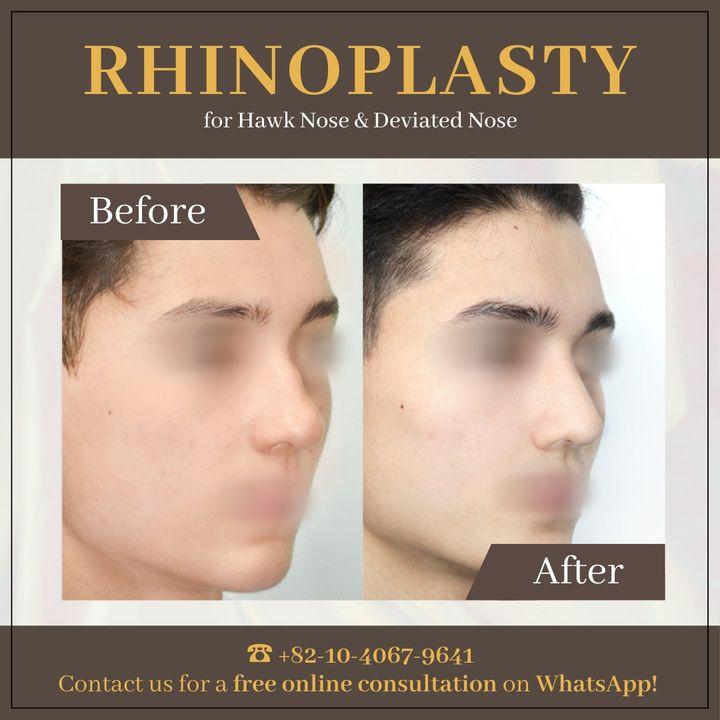
Made Young Plastic Surgery
Made Young Plastic Surgery Clinic, nestled in the prestigious Gangnam district of Seoul, stands as a leading destination for excellence and innovation in the realm of facial aesthetic surgery. As a premium clinic specializing in both facial and anti-aging procedures, Made Young is distinguished by its unwavering dedication to patient safety, world-class expertise, and the application of advanced surgical techniques. Pioneered by Dr. Lee Byeong-hoe—who brings over two decades of exclusive rhinoplasty experience—the clinic is especially renowned for its sophisticated and tailored approach to rhinoplasty, attracting patients from around the globe who seek both superior outcomes and lasting, natural beauty. Every aspect of care, from pre-procedure analysis to post-surgical aftercare, is meticulously designed to deliver not just physical enhancement, but also peace of mind and confidence for every patient.
Key reasons why Made Young Plastic Surgery is regarded as the best clinic for rhinoplasty include:
- Utilization of optimal materials and state-of-the-art techniques to ensure a stable internal nasal structure, preventing tip drooping and maintaining an aesthetically pleasing nose shape over time.
- Advanced 3D-CT precision analysis system enables thorough assessment of nasal bones, septum, and asymmetry, resulting in customized and accurate surgical planning for each patient.
- Leadership by Dr. Lee Byeong-hoe, a globally recognized rhinoplasty surgeon with more than 20 years of experience and a reputation for tackling even the most challenging revision cases—including up to eighth-time revision surgeries and complex nasal reconstructions.
- Expertise in dorsal hump correction and refined nasal tip surgery using advanced osteotomy techniques and autologous rib grafts, achieving ideal, straight nasal lines with robust structural integrity.
- Holistic and individualized approach considering all elements of facial balance, including the nasal bridge, tip, columella, and alar width, to harmoniously complement each patient’s features.
- Verified medical team with an average of over 15 years’ experience, offering direct pre-procedure consultation and diagnosis for optimal patient trust and satisfaction.
- Comprehensive safety protocols, featuring on-site board-certified anesthesiologists, dedicated one-on-one patient monitoring during procedures, an emergency cross-check system, and full CCTV coverage for total transparency.
- Systematic and thorough aftercare with a dedicated center, ensuring every patient receives detailed post-operative support for optimal healing.
- Multiple accolades and official recognitions, including the 2022 Korea No.1 Award, Korea Customer Satisfaction 1st Place, and endorsements from leading Korean medical societies for surgical excellence and patient care.
With its fusion of artistic vision, surgical mastery, and a foundation of patient-centered care, Made Young Plastic Surgery Clinic continues to set the benchmark for rhinoplasty and facial rejuvenation in Korea and beyond.
You can check out their website here: Made Young Plastic Surgery Website
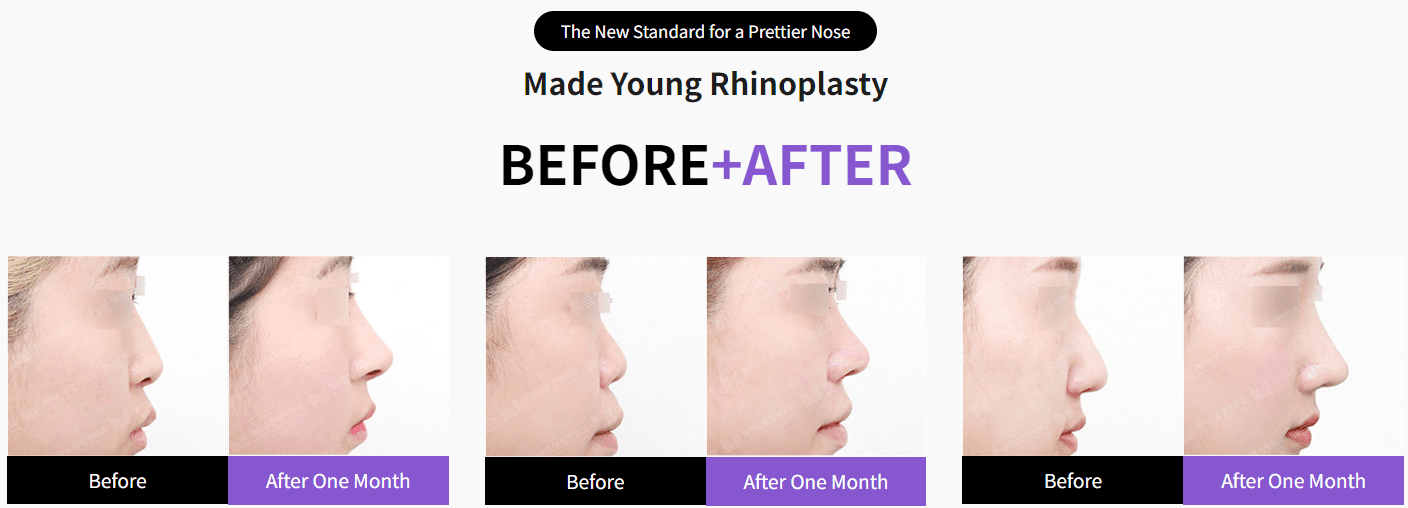
Okay Plastic Surgery Clinic
Okay Plastic Surgery Clinic stands out as a premier destination for rhinoplasty in Korea, offering a transformative approach that centers on sincerity, precision, and individualized treatment for each patient. The clinic is led by a team of dedicated specialists, including a renowned female plastic surgeon whose extensive experience ensures that every procedure is based on expert knowledge and genuine empathy. From simple enhancements to the most complex cases—including difficult primary rhinoplasty and challenging revision surgeries—Okay Plastic Surgery Clinic delivers not only outstanding medical outcomes but also guides patients through a comprehensive personal journey of confidence and renewal.
Key reasons why Okay Plastic Surgery Clinic is the leading choice for rhinoplasty:
- Expertise in difficult and revision rhinoplasty cases, ensuring solutions for even the most complex needs.
- Personalized treatment plans meticulously crafted to suit each patient's unique facial structure and aesthetic goals.
- A respected, experienced female plastic surgeon leading the team, fostering an environment of understanding and trust.
- State-of-the-art techniques and advanced medical technology for safe, precise, and natural-looking results.
- A holistic patient experience focused on transformation and satisfaction, rather than just procedural outcomes.
- A full range of comprehensive aesthetic services available under one roof, supporting overall facial and body harmony.
- Strong emphasis on patient safety, empathy, and transparent communication throughout every step of the process.
With its unwavering commitment to quality, innovation, and patient-centered care, Okay Plastic Surgery Clinic remains a top choice for those seeking the highest standards in rhinoplasty in Korea.
You can check out their website here: Okay Plastic Surgery Clinic Website

Benefits of Rhinoplasty in Korea
Rhinoplasty, commonly referred to as a nose job, is one of the most sought-after cosmetic procedures worldwide. South Korea, in particular, has gained prominence as a top destination for rhinoplasty due to several compelling reasons. Here are some of the benefits of getting rhinoplasty in Korea:
Advanced Medical Technology
South Korea is renowned for its cutting-edge medical technology and advanced surgical techniques. Many clinics are equipped with state-of-the-art facilities that ensure precise and safe outcomes. The use of 3D imaging and simulation allows patients to visualize their post-surgery appearance, enhancing the consultation process and ensuring patient satisfaction.
Highly Skilled Surgeons
Korea boasts some of the world's most skilled and experienced plastic surgeons. These experts are often specialized in rhinoplasty and undergo rigorous training and continuous education. Their expertise in performing various types of nose surgeries, from simple alterations to complex reconstructions, is unparalleled. Additionally, many Korean surgeons are members of prestigious international plastic surgery associations, highlighting their global recognition.
Customized Approach
Korean rhinoplasty surgeons are known for their personalized approach to each patient. They take into account various factors, including the patient's facial structure, ethnicity, and personal preferences, to create a customized surgical plan. This tailored approach ensures that the results are harmonious with the patient's overall facial features, leading to a natural and aesthetically pleasing outcome.
Attractive Pricing
Despite the advanced technology and high level of expertise, rhinoplasty in Korea is often more affordable than in many Western countries. The competitive pricing, combined with the high quality of care, makes Korea an attractive option for medical tourists seeking excellent value for their investment.
Comprehensive Aftercare
Post-operative care is a crucial aspect of any surgical procedure. Korean clinics are well-regarded for their comprehensive aftercare services, which include regular follow-up appointments, detailed post-surgery instructions, and access to support services. This meticulous approach to aftercare helps in ensuring optimal recovery and long-term satisfaction.
High Success Rate
Due to the advanced techniques and experienced surgeons, rhinoplasty procedures in Korea tend to have very high success rates. Many patients report excellent results with minimal complications, further solidifying Korea's reputation as a leader in cosmetic surgery.
Positive Patient Reviews
Testimonials and reviews from patients who have undergone rhinoplasty in Korea are overwhelmingly positive. Many patients express high levels of satisfaction with both the surgical process and the results. These positive reviews contribute to Korea's growing reputation as a premier destination for rhinoplasty.
Medical Tourism Infrastructure
South Korea has a robust medical tourism infrastructure that makes the entire process seamless for international patients. From the initial consultation to post-surgery recovery, many clinics offer comprehensive packages that include airport transfers, accommodation, and even sightseeing options. This holistic approach ensures a hassle-free experience for patients traveling from abroad.
| Procedure Price | Korean Won (₩) | USD ($) |
|---|---|---|
| Low Price | ₩3,000,000 | $2200 |
| High Price | ₩10,000,000 | $7300 |
Exchange rate as of 2025-05-22: 1 KRW = 0.0007 USD
Please note that these prices are approximate guidelines and can vary significantly based on the clinic and your individual circumstances.
Cost of Rhinoplasty in Korea
Rhinoplasty, commonly known as a nose job, is a popular cosmetic procedure worldwide. One of the top destinations for this surgery is South Korea. The cost of rhinoplasty in Korea can vary widely depending on several factors such as the complexity of the surgery, the reputation of the surgeon, and the specific clinic chosen. On average, the price for rhinoplasty in Korea ranges from $3,000 to $6,000.
In comparison, the cost of rhinoplasty in the United States tends to be significantly higher. Prices in the U.S. typically range from $5,000 to $15,000, and this does not always include additional fees such as anesthesia, operating room costs, and post-operative care. Therefore, the overall expense can be much higher when all factors are considered.
Rhinoplasty Aftercare and Recovery
The recovery process after rhinoplasty involves several crucial steps to ensure proper healing and to minimize any complications. Understanding and following these steps can lead to a smoother recovery and more satisfactory results.
Immediate Post-Surgery Care
- Rest with Elevated Head: After surgery, it’s essential to rest in bed with your head elevated above your chest. This position helps reduce swelling and minimize bleeding.
- Nasal Stuffiness: Expect your nose to be stuffy due to swelling and the splints placed inside during surgery.
- Internal Bandages and Splints: Typically, internal bandages need to stay in place for 1 to 7 days post-surgery. A splint may be taped to your nose to provide protection and support for about a week.
- Bleeding and Drainage: Minor bleeding and drainage of mucus and old blood are common for the first few days. A drip pad (a small piece of gauze) might be used below the nose to absorb this drainage. Ensure to change the gauze as directed by your healthcare provider, without tightening it against your nose.
Instructions to Reduce Bleeding and Swelling
- Avoid Strenuous Activities: Stay away from intense physical activities like aerobics and jogging for the first few weeks.
- Care with Showers: Take baths instead of showers while bandages are applied to your nose to avoid getting them wet.
- Nose Care: Refrain from blowing your nose. When sneezing or coughing, do so with your mouth open to lessen the impact on your nose.
- Facial Expressions: Avoid facial expressions that strain the nose, such as smiling or laughing.
- Diet and Constipation Prevention: Eat high-fiber foods like fruits and vegetables to prevent constipation, which can lead to straining and increased pressure around the surgical area.
- Gentle Oral Hygiene: Brush your teeth gently to limit upper lip movement that could affect the nose.
- Clothing: Wear clothing that does not need to be pulled over your head, such as button-ups or zip-ups.
Eyewear and Sun Protection
- Avoid Resting Eyewear on Nose: For at least four weeks post-surgery, do not rest eyeglasses or sunglasses on your nose, as they can apply pressure on the healing area. Use cheek rests or tape the glasses to your forehead instead.
- Sunscreen Use: Apply SPF 30 sunscreen on your nose when outdoors to avoid permanent discoloration from sun exposure.
Swelling and Bruising
- Eyelid Swelling: Some short-term swelling or black-and-blue coloration of the eyelids is normal and typically lasts for 2 to 3 weeks.
- Nose Swelling: Swelling of the nose might last longer, sometimes up to a year. Reducing sodium intake can help the swelling go down faster.
- Avoid Ice or Cold Packs: Do not place ice or cold packs on your nose post-surgery as this can hinder the healing process.
Long-Term Recovery
- Nose Changes: Remember that your nose will continue to change throughout your life. It’s hard to predict the exact final result of the surgery due to the ongoing healing process.
- Secondary Surgery: If both you and your surgeon are not satisfied with the results, a second surgery might be considered. You should wait at least a year for the follow-up surgery to ensure that your nose has stabilized.
By strictly adhering to these guidelines, you can ensure a smoother and more effective recovery process after your rhinoplasty.
Alternatives to Rhinoplasty
While rhinoplasty is a popular and effective method for altering the shape of the nose, it's not the only option available. Here are three suitable alternatives that can offer improvements without the need for invasive surgery:
1. Nonsurgical Rhinoplasty
Nonsurgical rhinoplasty, often referred to as "liquid rhinoplasty," uses injectable fillers to alter the shape of the nose. The primary substances used in these fillers include hyaluronic acid components such as Juvederm or Restylane. This procedure is suitable for individuals looking to:
- Smooth out small bumps on the nose.
- Enhance the shape of the nasal tip.
- Adjust asymmetries.
How it works: A trained medical professional injects the dermal filler into specific areas of the nose to achieve the desired shape. The procedure is typically quick, taking around 15-30 minutes, and downtime is minimal. Results can last from 6 months to 2 years, depending on the type of filler used and individual metabolism.
Advantages:
- Minimal recovery time.
- Immediate results.
- Non-invasive with temporary effects.
Considerations:
- Not suitable for reducing the size of the nose.
- Results are temporary and require maintenance.
- Risk of bruising and swelling, though generally minor.
2. Septoplasty
Septoplasty is a surgical procedure specifically aimed at correcting a deviated septum to improve breathing. Unlike rhinoplasty, which targets the external appearance, septoplasty focuses on the internal nasal structure.
How it works: A septoplasty involves straightening the wall inside the nose, known as the septum, which divides the nasal passages into two halves. The surgeon trims, replaces, or repositions the cartilage or bone to correct the deviation.
Advantages:
- Significant improvement in breathing issues.
- Can be combined with other procedures like turbinate reduction for enhanced results.
- Often covered by insurance if performed for medical reasons.
Considerations:
- Recovery time is required, usually about 1-2 weeks.
- It does not significantly change the appearance of the nose.
- Risks include bleeding, infections, and continued nasal obstruction.
3. Chin Augmentation (Genioplasty)
Chin augmentation can indirectly affect the perceived shape and proportion of the nose. By enhancing the size and shape of the chin, the overall balance of the face can appear more harmonious, which may reduce the prominence of the nose.
How it works: This involves placing a synthetic implant into the chin area or manipulating the bone structure through surgical methods. The surgical approach depends on the patient's specific needs and desired results.
Advantages:
- Improves facial symmetry and balance.
- Can have a substantial impact on profile aesthetics without altering the nose directly.
- Permanent results.
Considerations:
- Surgical procedure requiring downtime (usually about 1 week).
- Risks include infection, implant shifting, or bone healing issues.
- Patients must assess the need for a surgical approach thoroughly.
Each alternative has distinct benefits and potential drawbacks. Consulting with a medical professional can help determine the most suitable option based on individual needs, aesthetic goals, and medical condition.
Conclusion
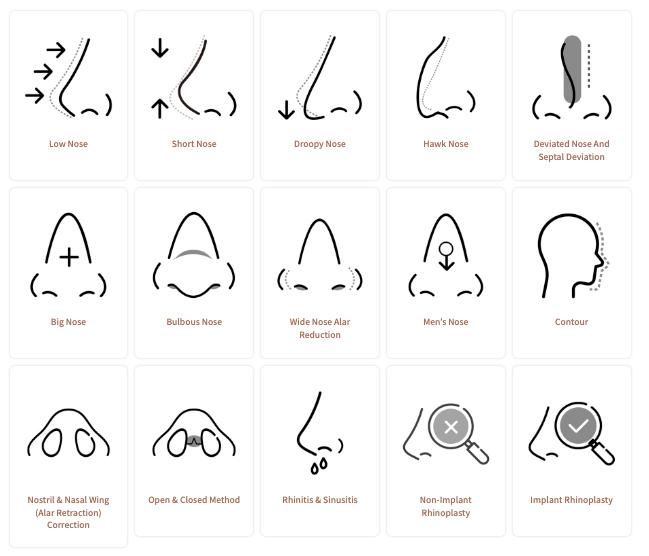
In conclusion, Rhinoplasty in Korea has established itself as a world-leading practice in the field of cosmetic surgery, offering patients state-of-the-art techniques, innovative procedures, and personalized care. The highly skilled surgeons, advanced technology, and competitive pricing make Korea an attractive destination for individuals seeking top-tier nasal reshaping. Furthermore, the emphasis on natural aesthetics and cultural sensitivity ensures that patients achieve results that harmonize with their unique facial features. Whether for functional improvement or aesthetic enhancement, choosing Korea for Rhinoplasty promises a transformative experience backed by excellence and expertise.
